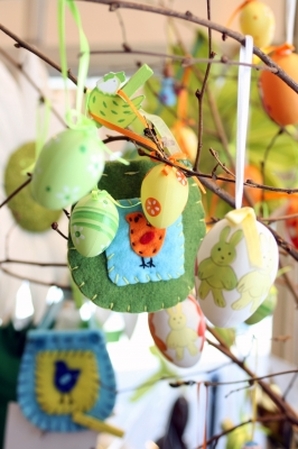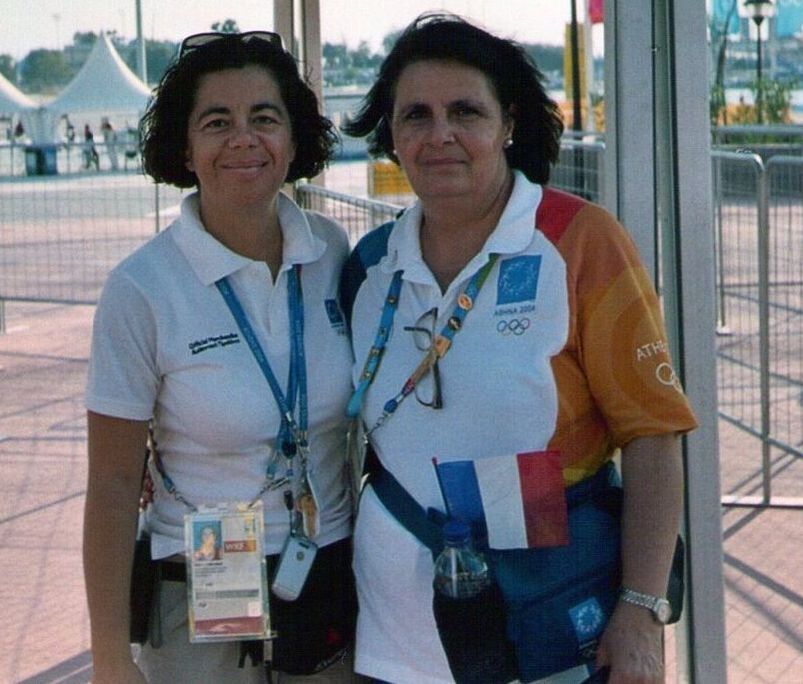|
“Can you all get out of the kitchen!” “But I’m bored,” says Nick. “Why don’t you make that Easter collage with Hari,” his mum insists, looking at me meaningfully. “If you’re not going to help me with the cooking, find something else to do.” It pays off to feign a lack of culinary interest at Easter time. It’s just too much hard work. “Can we listen to some music too?” asks Jen as we spread out paper, glue and crafty bits. “Sure - ABBA or The Best Ever Disco Album?” (Between their mum and babysitter, we instilled in Jen and Nick a highly cultivated taste for music from an early age - Dancing Queen, Disco Inferno, Fly Robin Fly, I Feel Love, Born to be Alive). Disco dancing and brainstorming around the craft table, several brilliant ideas sprouted between the three of us, inevitably weaving their way into our emerging bedtime story saga. “Nick, you cut out the bunny ears. Jen, go find some cotton wool,” I instructed. “Oh, and we need some black belts.” (Now I’ve said before that I’m not the crafty type – instead, I'm the ideas person and delegate the crafty tasks to the kids). “Mum,” Nick announced as we returned to the kitchen some time later, “we’ve got an Easter concert for you.” It was on that creatively productive pre-Easter afternoon that the Kung Fu Fighting Bunny made his debut and evolved into a key character in our long-running Goldilocks bedtime story.  Image: Simon Howden / FreeDigitalPhotos.net Where did the Easter bunny come from? • The frisky hare and rabbit were considered the most fertile animals in pre-Christian folklore, symbolising new life during the Spring. • The bunny hopped onto the German scene in the 1500s, with the first edible Easter bunnies, made of pastry and sugar, appearing in the early 1800s. • German settlers introduced the Easter bunny concept to American folklore during the 1700s and children would build a ‘nest’ for Easter eggs in a secluded place in the home, barn or garden. • This idea developed into elaborate baskets as the Easter bunny tradition spread throughout the country. Obviously, no one questioned the implausible link between bunnies and eggs. Source: Easter Bunny’s Net What came first, the bunny or the egg? • Easter eggs were painted with bright colours to represent the sunlight of spring, used in Easter-egg rolling contests or given as gifts. • Lovers and romantic admirers exchanged coloured eggs etched with various designs. • In medieval time eggs were traditionally given to servants at Easter. In Germany eggs and other Easter gifts were given to children. • Different cultures have their own ways of decorating Easter eggs: Greeks exchange crimson eggs honouring the blood of Christ; green eggs are used on Maundy Thursday (Holy Thursday) in parts of Germany and Austria; Slavic people decorate their eggs in gold and silver patterns. Source: Easter Bunny’s Net It’s a long time between chocolate eggs and Greek Easter this year, according to the Julian calendar; or a prolonged choc fest, depending on your perspective. In fact, it’s one of those rare times Greek Easter falls five weeks after the Gregorian calendar-based Easter favoured by Protestant and Catholic churches. In the meantime, you may want to have a go at this traditional recipe below – at least you’ve got enough time to have it ready by 5 May. As for me, I’m just not a baker. Tsoureki – Greek Easter bread Ingredients: • 8 cups all purpose flour (plus more for counter) • 1/2 tsp salt • 1 1/2 cups milk, warmed (not hot) • 3 envelopes dry yeast • 1 2/3 cup unsalted butter (3 sticks plus 3 tbsp) • 1 2/3 cup sugar • zest of one orange • zest of one lemon • 1 tbsp Mahlab (Mahlepi) • 5 eggs, lightly beaten • 1 egg, beaten with a splash of water • Whole sesame seeds for sprinkling • 1 red egg (optional) Preparation: Sift the flour with the salt in a large bowl and set aside. Dissolve the yeast in the warm milk. (Be sure it’s lukewarm, not hot). Add 1/2 cup of the flour and 1 tbsp sugar to the mixture. Cover tightly and set aside until it becomes bubbly and foamy. In a large saucepan, melt the butter over very low heat. Stir in the sugar, orange zest, lemon zest, and mahlab. Remove from heat and stir in the beaten eggs. Cool slightly. Add the yeast mixture to a large mixing bowl. Add in the butter/sugar/egg mixture. Slowly incorporate the flour until the mixture forms a smooth, wet dough. Cover the bowl and let rise until it is about double in size – about 2 hours in a warm place. Turn the dough out on to a well-floured counter and punch down. You will need to keep sprinkling the dough with flour to keep it from sticking. It will remain a loose, wet dough. Separate the dough into four equal parts. Shape into rounds and allow to rest for 10 minutes. Once rested, divide each round into three pieces. Roll the pieces out into long cords about a foot long. Braid the three ropes together to form a braided loaf. Place the braids on baking sheets to rise again. Once the dough has risen to about double, carefully brush the surface with egg wash and sprinkle with sesame seeds. Gently press a single red egg in the upper section of the braid. Bake in a pre-heated 280° oven for about an hour until the crust is nicely browned all over. Source: Greekfood.about.com HAPPY (AUSSIE) EASTER! Do you indulge in the chocolate egg tradition?
10 Comments
Jenny Duckworth
30/3/2013 02:01:22 pm
As a child I was always given a Darrell Lea egg (not hollow, but filled with white and yolk).
Reply
Hari Kotrotsios
30/3/2013 02:14:38 pm
Jenny, we had the hard boiled, red Easter eggs - though Greeks certainly don't hide them around the house. They're prominently displayed on the dining table and the expectation is to help yourself.
Reply
Hari Kotrotsios
30/3/2013 02:13:10 pm
Thanks for stopping by, Earth. Tsoureki is not actually one of my favourite Easter breads, but lots of Greeks love it!
Reply
Coral McBride
31/3/2013 08:09:43 am
Thanks once again Harwas a great read.Easter Sunday afternoon all visitors asleep too much Easter.Hope you received many Easter eggs chocolate is good for you.best wishes.Coral McBride
Reply
Hari Kotrotsios
31/3/2013 10:00:06 am
Thanks Coral, it was a relaxing day with a couple of good friends chatting over finger food.
Reply
Rob N
31/3/2013 08:15:36 am
Indeed I do mind indulging in chocolate Easter eggs. after weeks of serious weight loss (5.7kgs). Instead I have gone for the traditional (now) red & gold grape tomatoes. Ovoid & few cals!!
Reply
Hari Kotrotsios
31/3/2013 10:01:42 am
Congrats Robyn. A much healthier alternative, to be sure. I must admit, I haven't had any chocolate eggs either!
Reply
31/3/2013 10:43:28 am
I've consulted widely this Easter, Hari. The verdict is that you're a good egg.
Reply
Hari Kotrotsios
31/3/2013 11:19:34 am
Peter, I hope you're not just egging me on...
Reply
Your comment will be posted after it is approved.
Leave a Reply. |
 Portuguese Camino 2019 Portuguese Camino 2019
Travel blogs
New Zealand 2008 Tibet 2007 New Zealand 2006 Melbourne 2006 United Kingdom 2004 Athens Olympics 2004 Peru 2003 Beijing to Athens 1994 Nepal 1991 Categories
All
Archives
December 2019
|
|
I acknowledge the traditional Custodians of the land on which I work and live, the Gubbi Gubbi / Kabi Kabi and Joondoburri people, and recognise their continuing connection to land, the waters and sky. I pay my respect to them and their cultures; and to Elders past, present and emerging.
|
© 2024 HARI KOTROTSIOS
|


